Topics
Category
Era
Handicraft Guild
A hand-formed and hand-finished Arts and Crafts-style hammered copper jardiniere flowerpot, c.1910. Bottom center is stamped "Handicraft Guild/Minneapolis."
At the turn of the twentieth century, Minneapolis became a national center for the arts movement known as Arts and Crafts. The city's Handicraft Guild led the way. Founded by women, the Handicraft Guild made the arts in Minneapolis more democratic and populist by offering classes like pottery and metalwork to artists and teachers.
The international Arts and Crafts movement revived interest in hand-made arts and crafts. It started in England in the middle of the nineteenth century as an alternative to tedious factory labor brought by the Industrial Revolution. The Arts and Crafts revival valued patience, cooperation, and self-knowledge, and in Minneapolis, it also valued populism and democratic access to the arts.
Minneapolis was one of the first cities in the United States to establish an arts and crafts organization: the Arts and Crafts Society, organized in 1899. Its founders built upon the accomplishments of an earlier group, the Chalk and Chisel Club, which had held Minneapolis's first arts and crafts exhibit in 1898 and generated local interest. The Arts and Crafts movement appealed primarily to women and men of European descent who were part of Minneapolis's emerging urban middle class.
Many recognized a need for schoolteachers to gain the skills necessary to teach crafts in public schools, but the MSFA did not have room to offer hands-on workshops. In the fall of 1904, eleven women founded the Handicraft Guild as a Nicollet Avenue showroom for local artists. Soon thereafter, the Guild began offering art classes and workshops for artists and teachers. Thus, the Guild provided more opportunities to those interested in the handicrafts—crafts made by hand with a fine arts sensibility.
The Guild was officially incorporated in 1905. That year, it organized its first of many successful summer school courses. The 1905 summer course was managed by Mary Linton Bookwalter, an interior designer. It was taught and directed by Ernest Batchelder. Batchelder was a renowned tile maker, and his style was marked by beautiful form, rich colors, and few embellishments. Although he left the Guild in 1909, his aesthetic continued to influence the art made by Handicraft Guild members.
As the Guild grew, it required larger spaces. After a stay on Second Avenue in Minneapolis, the Guild moved in 1907 to a new building designed by William Channing Whitney and decorated by Guild members. With the move, the Guild became a center of artistic activity in Minneapolis. The new building at 89-91 Tenth Street South had workshops where artists could improve their methods and design; classrooms and other teaching spaces; studios for individual artists; a showroom; and a large assembly hall that hosted lectures and special exhibits.
In 1918, the Handicraft Guild determined that it was too difficult to manage both the Guild's building and its art education programs. The Guild was dissolved and absorbed by the new Art Education department at the University of Minnesota. Ruth Raymond, the last president of the Guild, became the chair of the department. She held that position until her retirement thirty years later. The Guild's building continued to be used by artists for many years after the Guild moved to the University of Minnesota. In 1998, it was designated an Individual Landmark by the Minneapolis Heritage Preservation Commission.
The Handicraft Guild no longer exists, but it has had lasting effects on the arts and cultural landscape. Many houses still have fireplaces, tiles, and other design elements that were created by Guild members in the early twentieth century. Internationally acclaimed Minnesota artist Henrietta Barclay Paist developed a more modern style when she studied with the Handicraft Guild, and painters like Grant Wood were influenced by the Guild's work.
Bibliography
Anderson, Marcia Gail. "The Handicraft Guild of Minneapolis: A Model of the Arts and Crafts Movement." In Substance of Style: Perspectives on the American Arts and Crafts Movement, edited by Bert Denker. Hanover, NH: University Press of New England, 1996.
Conforti, Michael, ed. Art and Life on the Upper Mississippi, 1890–1915. Newark, DE: University of Delaware Press, 1994. Editor's Note: See especially Marcia G. Anderson, "Art for Life's Sake: The Handicraft Guild of Minneapolis," 122–150; Appendix 1: Biographies of Prominent Members of the Handicraft Guild of Minneapolis; and Thomas O'Sullivan, "Robert Koehler and Painting in Minnesota, 1890-1915," 93–121.
M2134
Chant, Elisabeth A. "The Handicraft Guild." The Bellman (March 21, 1908): 317–19.
Minneapolis Institute of Arts. About the Museum.
http://new.artsmia.org/about/
"Summer School Handicraft Guild." The Craftsman 8, no. 2 (May 1905): 266–67.
"Society Biographies: The Handicraft Guild, Minneapolis." Handicraft no. 3 (December 1910): 341–42.
Related Resources
Primary
Anderson, Martha Scott, "A New Art Industry May Grow from the Pottery Work of the Handicraft Guild." Minneapolis Journal, September 2, 1905.
"Art Interests." Minneapolis Journal, December 3, 1904.
"Art Work Development Planned at University." Minneapolis Tribune, November 7, 1918.
"Guild Workers Take Up Pottery." Minneapolis Journal, April 19, 1905.
"Handicraft Guild at Head of List." Minneapolis Journal, July 28, 1907.
Marcia G. Anderson Handicraft Guild of Minneapolis Research Files, 1990–1996
Manuscript Collection, Minnesota Historical Society, St. Paul
Description: Correspondence, photographs, and general research about topics, organizations, and individuals involved in or associated with the Handicraft Guild of Minneapolis.
"Minneapolis has a Greenwich Village," Minneapolis Tribune, December 3, 1916.
P1973 and +211
Mary Moulton Cheney Papers, 1892–1957
Manuscript Collection, Minnesota Historical Society, St. Paul
Description: Artwork, papers, newspaper clippings, and biographical material related to Cheney's career as an artist, art teacher, and director of the Minneapolis School of Art (1897-1926).
uarc 773
Ruth Raymond Papers, 1923–1947
University Archives, Elmer A. Andersen Library, University of Minnesota, Minneapolis
Description: Contains the papers of Ruth Raymond, chair of the Art Education department at the University of Minnesota and former principal of the Handicraft Guild.
Secondary
Dean, Patty. " 'It Is Here We Live': Minneapolis Homes and the Arts and Crafts Movement." Minnesota History 57, no. 5 (Spring 2001): 244–262.
http://collections.mnhs.org/MNHistoryMagazine/articles/57/v57i05p244-262.pdf
Kaplan, Wendy. "The Art is That is Life": The Arts & Crafts Movement in America, 1875–1920. Boston: Museum of Fine Arts, 1987.
Winter, Robert. Batchelder: Tilemaker. Los Angeles: Balcony Press, 1999.
Web
The City of Minneapolis. Heritage Preservation Commission. Minneapolis Landmarks and Historic Districts. Handicraft Guild Building.
http://www.ci.minneapolis.mn.us/hpc/landmarks/hpc_landmarks_10th_st_s_89-91_handicraft_guild_building
Related Images
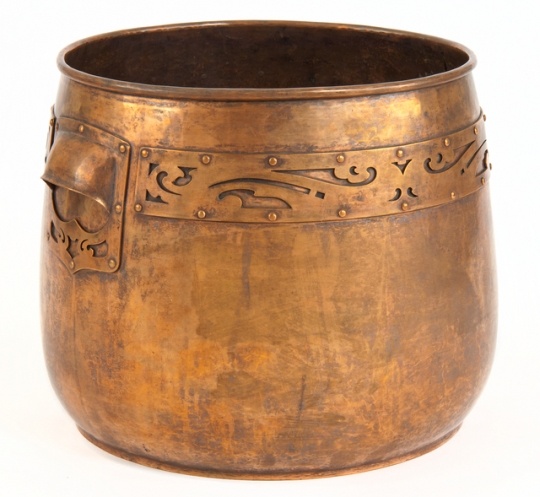
Arts and Crafts-style hammered copper jardiniere flowerpot
A hand-formed and hand-finished Arts and Crafts-style hammered copper jardiniere flowerpot, c.1910. Bottom center is stamped "Handicraft Guild/Minneapolis."
Public domain
Holding Location
Articles
More Information
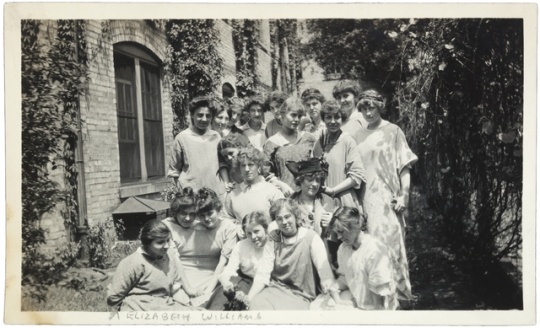
Junior Class at Handicraft Guild
Junior Class at Handicraft Guild, May 1914.
Public domain
Holding Location
Articles
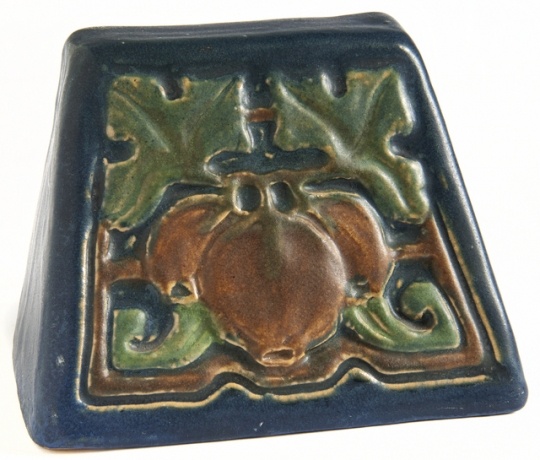
Glazed earthenware bookend
Glazed earthenware bookend impressed "Handicraft Guild/Minneapolis" on back, c.1905–1918.
Public domain
Holding Location
Articles
More Information
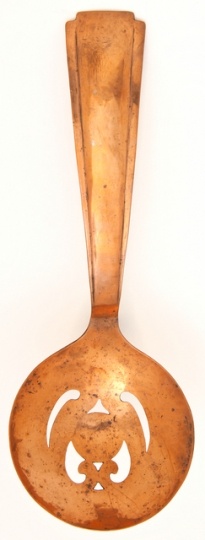
Arts and Crafts style copper spoon
Arts and Crafts style copper spoon. The underside has the monogram of the Minneapolis Handicraft Guild, c.1905–1918.
Public domain
Holding Location
Articles
More Information
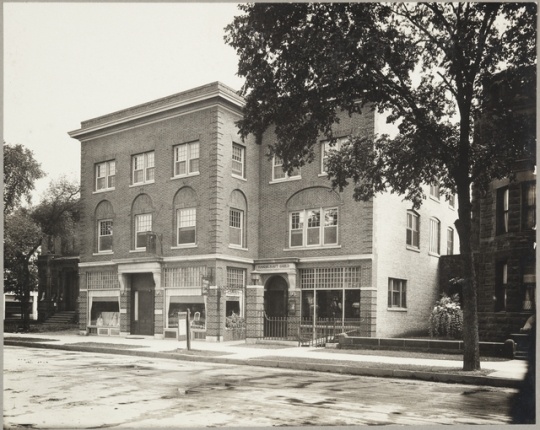
Handicraft Guild, 89 South Tenth, Minneapolis
Handicraft Guild, 89 South Tenth, Minneapolis, c.1909. Photographer: Elgin R. Shepard.
Public domain
Holding Location
Articles
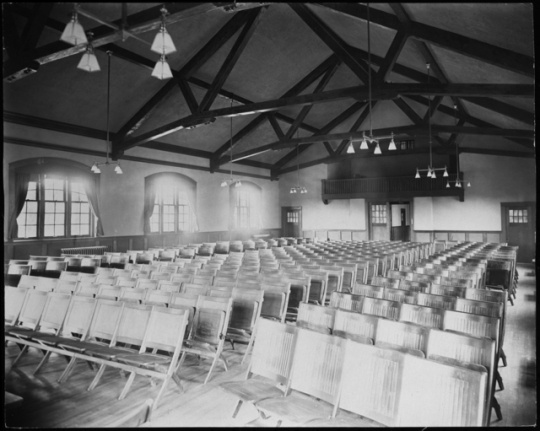
Assembly Room of Handicraft Guild, Tenth Street
Assembly Room of Handicraft Guild, Tenth Street and Marquette Avenue, Minneapolis, c.1910.
Public domain
Holding Location
Articles
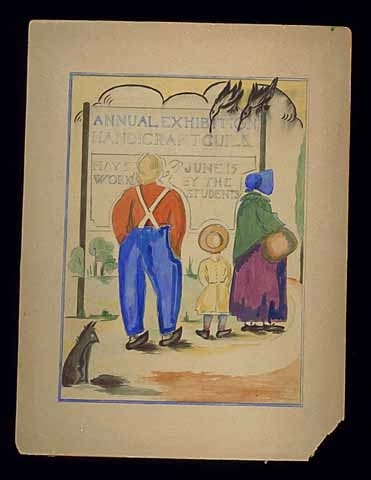
Unfinished watercolor and pencil study for a poster
Unfinished watercolor and pencil study for a poster, possibly by Mary S. Campbell, c.1915.
Public domain
Holding Location
Articles
More Information
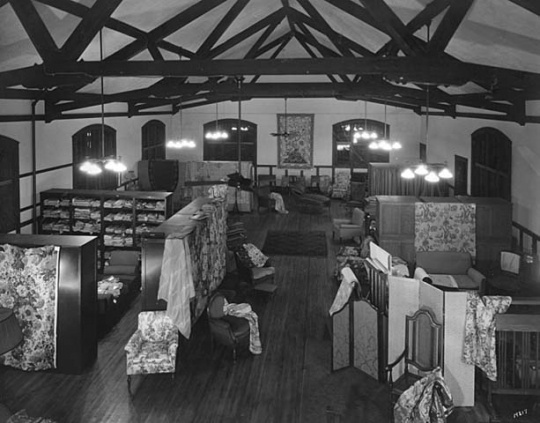
Weber Werness Studios in the Handicraft Guild Building, Tenth Street
Second floor of Weber Werness Studios in the Handicraft Guild Building, 89 South Tenth Street, Minneapolis, c.1930.
Holding Location
Articles
Related Articles
Turning Point
In 1907, the Handicraft Guild moves into a three-story building near Nicollet Avenue. The move establishes the growing organization as a center of art and art education in Minneapolis.
Chronology
1898
1899
1904
1905
1907
1909
1918
1998
Bibliography
Anderson, Marcia Gail. "The Handicraft Guild of Minneapolis: A Model of the Arts and Crafts Movement." In Substance of Style: Perspectives on the American Arts and Crafts Movement, edited by Bert Denker. Hanover, NH: University Press of New England, 1996.
Conforti, Michael, ed. Art and Life on the Upper Mississippi, 1890–1915. Newark, DE: University of Delaware Press, 1994. Editor's Note: See especially Marcia G. Anderson, "Art for Life's Sake: The Handicraft Guild of Minneapolis," 122–150; Appendix 1: Biographies of Prominent Members of the Handicraft Guild of Minneapolis; and Thomas O'Sullivan, "Robert Koehler and Painting in Minnesota, 1890-1915," 93–121.
M2134
Chant, Elisabeth A. "The Handicraft Guild." The Bellman (March 21, 1908): 317–19.
Minneapolis Institute of Arts. About the Museum.
http://new.artsmia.org/about/
"Summer School Handicraft Guild." The Craftsman 8, no. 2 (May 1905): 266–67.
"Society Biographies: The Handicraft Guild, Minneapolis." Handicraft no. 3 (December 1910): 341–42.
Related Resources
Primary
Anderson, Martha Scott, "A New Art Industry May Grow from the Pottery Work of the Handicraft Guild." Minneapolis Journal, September 2, 1905.
"Art Interests." Minneapolis Journal, December 3, 1904.
"Art Work Development Planned at University." Minneapolis Tribune, November 7, 1918.
"Guild Workers Take Up Pottery." Minneapolis Journal, April 19, 1905.
"Handicraft Guild at Head of List." Minneapolis Journal, July 28, 1907.
Marcia G. Anderson Handicraft Guild of Minneapolis Research Files, 1990–1996
Manuscript Collection, Minnesota Historical Society, St. Paul
Description: Correspondence, photographs, and general research about topics, organizations, and individuals involved in or associated with the Handicraft Guild of Minneapolis.
"Minneapolis has a Greenwich Village," Minneapolis Tribune, December 3, 1916.
P1973 and +211
Mary Moulton Cheney Papers, 1892–1957
Manuscript Collection, Minnesota Historical Society, St. Paul
Description: Artwork, papers, newspaper clippings, and biographical material related to Cheney's career as an artist, art teacher, and director of the Minneapolis School of Art (1897-1926).
uarc 773
Ruth Raymond Papers, 1923–1947
University Archives, Elmer A. Andersen Library, University of Minnesota, Minneapolis
Description: Contains the papers of Ruth Raymond, chair of the Art Education department at the University of Minnesota and former principal of the Handicraft Guild.
Secondary
Dean, Patty. " 'It Is Here We Live': Minneapolis Homes and the Arts and Crafts Movement." Minnesota History 57, no. 5 (Spring 2001): 244–262.
http://collections.mnhs.org/MNHistoryMagazine/articles/57/v57i05p244-262.pdf
Kaplan, Wendy. "The Art is That is Life": The Arts & Crafts Movement in America, 1875–1920. Boston: Museum of Fine Arts, 1987.
Winter, Robert. Batchelder: Tilemaker. Los Angeles: Balcony Press, 1999.
Web
The City of Minneapolis. Heritage Preservation Commission. Minneapolis Landmarks and Historic Districts. Handicraft Guild Building.
http://www.ci.minneapolis.mn.us/hpc/landmarks/hpc_landmarks_10th_st_s_89-91_handicraft_guild_building









